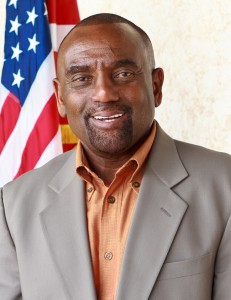Inside Google HQ: What does the future hold for the company whose visionary plans include implanting a chip in our brains?
::::::::::::::::::
Ian Burrell’s visit to the legendary “Googleplex” at Mountain View comes at an awkward time for the company
::::::::::::::::::::::::::::::::
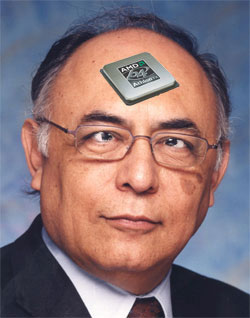
The power of computing, and the thrill of its apparently infinite possibilities, has also long been a source of fear.
Going into a San Francisco second-hand book shop, shortly before a visit to Google’s headquarters in California, I happened upon a copy of Dick Tracy, an old novel based on Chester Gould’s cartoon strip starring America’s favourite detective.
For a 1970 publication, the plot seemed remarkably topical. Dick, and his sidekick Sam Catchem, find themselves battling a sinister character known as “Mr Computer” who wants to control the world. His strange powers enable him to remember everything he hears or sees and recall it instantly. This is a bad guy who can store data, analyse voice patterns and read private thoughts.
My visit to the legendary “Googleplex” at Mountain View comes at an awkward time for the company. Edward Snowden’s revelations about the snooping of the US Government’s National Security Agency (NSA) in its clandestine electronic-surveillance programme PRISM have provoked a crisis of trust in Silicon Valley. Larry Page, Google co-founder and CEO, rushed out a blog to deny claims in leaked NSA documents that it – in parallel with other American internet giants – had been co-operating with the spying programme since 2009. “Any suggestion that Google is disclosing information about our users’ internet activity on such a scale is completely false,” he said.
Trust is everything to Google. It stands on the verge of a technological breakthrough that can transform its relationship with us. Already, it is universally recognised as the world leader in searching for information. It handles around 90 per cent of internet searches in the UK: when we want to know something, most of us turn to Google. But it wants more – it wants to become our constant companion.
The rapid evolution
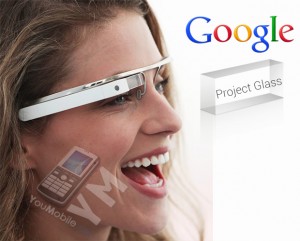
The first stage of this new level of intimacy is Google Glass, which I am invited to trial as part of a briefing on the company’s future plans.
My first impression is that this revolutionary contraption is remarkably unobtrusive. It looks like a pair of glasses and, at 36 grams, weighs about the same as a typical pair of sunglasses due to its largely titanium frame. Despite the chunkiness of the right temple – made from plastic and where all the technology is stored – there is no sense of imbalance.
The awkwardness only starts when you start to interact. You turn the contraption on by tapping your finger on the right side of the frame, or surreptitiously throwing your head back. On a screen projected a few inches in front of your right eyeball is a digital clock and the magic words “OK glass”, the uttering of which takes you to a range of task options: ask a question, take a picture, record a video, get directions to, send a message to, make a call to, make a video call to.
The idea of Google Glass is that you can walk down busy streets receiving helpful facts – without needing to take your mobile phone from your pocket. It could end the urban hazard of pedestrians staring at their mobiles instead of looking where they’re going.
At the moment it’s a work in progress, which is why the prototype is called the Explorer and the 10,000 American-based pioneers who are trialling the apparatus – mostly web developers and heavy social-media users – are dubbed “explorers”.
Does it work? Yes and no. Answering questions is its central feature. It likes straightforward instruction such as “OK Glass… Google – what is the height of David Cameron?”, returning within four seconds with an image of the Prime Minister and a computer voice telling me “David Cameron is six feet zero inches tall”. But when I ask for the name of the wife of his predecessor, Gordon Brown, I’m offered details of “Golden Brown”, a hit for The Stranglers in 1982.
The camera and video option is novel and discreet, except when you bark out the words: “OK Glass, take a picture!” Three seconds after giving the order, you have a shot (or film) which you can share with friends on the Google+ social network. One Explorer recently used Google Glass to snap a police arrest as it was taking place. The potential is enormous: a proud mum could film her son taking a penalty kick in a football match while dad, abroad but connected through the Google Hangout service, could watch the action live through his wife’s Google Glass. The more you hand your life over to Google, the more you get out of this technology.
Google Glass is part of a wider ecosystem and is not currently intended as an alternative to a mobile phone but as a complement to it. Glass needs the mobile in your pocket to locate your position and connect to your contacts via 4G and Bluetooth. Rather than encouraging users to be constantly gibbering in public, the default position for this device is “off”, I am told. The screen has been positioned above the eye line and at two o’clock on a clock face to ensure that the people f you are with know from your squint when you are consulting Glass.

But none of these caveats can conceal the scale of Google’s ambition. It is staking its future on a vast store of information called the Knowledge Graph, which is growing at an exponential rate. When it launched in May 2012, Knowledge Graph was a pool of 3.5 billion facts on 500 million of the world’s most searched subjects. In a little over a year the knowledge held on the Google servers has grown to 18 billion facts on around 570 million subjects.
This Knowledge Graph is the base for Google Now, the latest incarnation of Google which is personalising the search engine by giving you a series of bespoke “cards” as you log on. They tell you the local weather, the traffic you might face on the way to work, details of your meetings and restaurant bookings taken from your Google email account, your team’s latest result and so on.
In Building 43 of the Googleplex, Ben Gomes talks with barely concealed excitement about a “new epoch”. A Google fellow and the company’s Vice President of Search he has been working on these technologies for 14 years. “[Knowledge Graph] is everything you have at some point asked a query about – plus everything that everyone else has thought of!” he exclaims. “It’s a meld of all the world’s interests and information needs.”
The future, he says, is for this enormous resource to be “present everywhere”. It’s a long step from the British Council library in Bangalore, where Gomes used to go to obtain his reading matter. “You borrowed a book – if it was available – and then you read it and got the next book. I got two books and that was all the information that I had for a week,” he says. “Today it would be unthinkable for that [information] not to be available in seconds.”
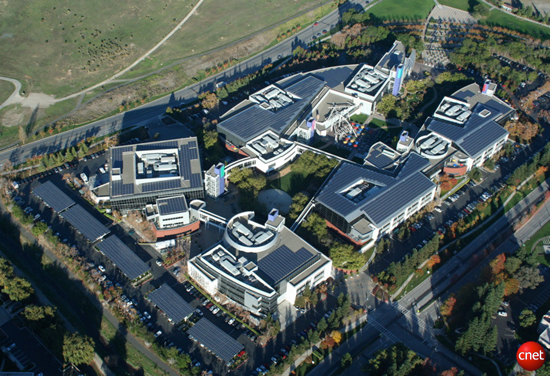
Google’s options have grown with recent advances in speech-recognition technology (it can now decipher 35 languages) and in natural-language processing, the “holy grail” that means the computer can understand what is being spoken (for example, knowing that “tall” refers to height) and hold a conversation. The “OK Google…” voice-prompted search tool (already installed on mobile apps) is to become standard on the Google Chrome engine.
Scott Huffman, Google’s engineering director, says the company’s intention is to “transform the ways people interact with Google”. That means having conversations similar to those you would have with humans. No longer will we have to go to “settings” to recalibrate our devices – we will simply order them to make the desired changes. And those devices will not be in our pockets – but all around us in every room.
“If you look back 10 years there was a computer on my desk and today there’s a computer in my pocket and it still has a screen and a keyboard,” says Huffman.
“But fast forward a bit and… I think there is going to be a device in the ceiling with microphones, and it will be in my glasses or my wristwatch or my shirt. And like the Google Glass it won’t have a keyboard… you just say ‘OK Google, blah-blah-blah’ and you get what you want.”
Where will it end? Gomes agrees that a chip embedded in the brain is far from a sci-fi fantasy. “Already people are beginning to experiment with handicapped people for manoeuvring their wheelchairs,” he says. “They are getting a few senses of direction with the wheelchair but getting from there to actual words is a long ways off. We have to do this in the brain a lot better to make that interaction possible. We have impatience for that to happen but the pieces of technology have to develop.”
Any visitor to the Googleplex will testify that this is not a regular company. By lunch time, Googlers are out on the sand of the beach volleyball court. A statue of a dinosaur skeleton – a pointed juxtaposition of past and future – has been decorated with model pink flamingos, hanging from its bones. Around the central patio there are awnings in Google-style primary colours which add to the impression of a holiday resort.
It is anything of the sort, of course. In one of the site’s 30 cafés, the piped sound of Australian group Men at Work accompanies Google staff as they help themselves to free meals. Yoshka’s Café is named after the first dog to have a Google pass – staff are allowed to bring canines to work, to add a feeling of domesticity (and presumably to get them to stay later). Small plates are offered to encourage smaller portions and less waste. Fruit and water are placed at eye level but you have to bend down for sugary drinks. All of this is data driven. Ingredients in meals are marked on displays with traffic-light colours to convey healthy credentials. Coconut scores a green but vanilla, for some reason, is marked a dangerous red.
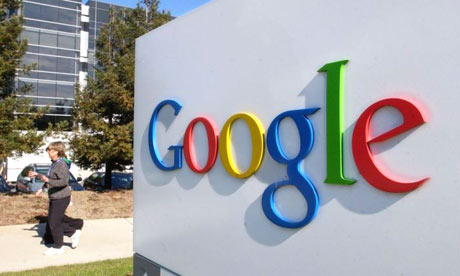
There are seven gyms in the Googleplex and I see a man walking on a gym treadmill while simultaneously working from a specially made desk with a large computer screen. He has headphones on and his laptop is also open, showing a screensaver of his baby. Nearby there is a Japanese meditation space – “Experience the joy and mindfulness of just eating, try monotasking for lunch today” – and a Nap Pod capsule where you can have a power sleep (30-minute limit “out of fairness to fellow Googlers”).
Building 43 is decorated with a giant model of Virgin Galactic’s Space Ship One, donated by Sir Richard Branson, and Building 2000 has a long, silver, swirling slide that allows you to bypass the stairs.
It’s no wonder people want to work here. About 10,000 do. But the company gets two million applications a year, a demand reflected in the new Hollywood movie The Internship, which was partly filmed at the Googleplex.
In the Dick Tracy novel, Mr Computer (his initials were I.B.M.) came a cropper when the detective’s deliberately eccentric behaviour caused his adversary’s brain to malfunction. But what would we do without Google? Since my visit I’ve found myself engaging more and more with its services.
Back in London I get to have another go with Glass. This time the headset (the only one in the UK) is orange. There are six colours and Google is also working on a sunglasses design. I’m starting to get the hang of it, of swiping the frame from ear to eye to move through your timeline of previous searches, photo snaps and actions. I learn to say “Welcome to London” in Japanese. It’s great fun.
But to get the best results, I’m told to speak up and in an American accent. Google seems to respond best when I’m hollering like John Wayne in 7th Cavalry uniform. Imagine that in your local restaurant. “OK Glass Google!” I yell self-consciously in broad Texan. “Will I need an umbrella tomorrow?”
Google Glass and I are now in full conversation. “Yes,” she tells me. “The forecast for tomorrow in London is 24 degrees with a 50 per cent chance of rain.”
As it turns out, tomorrow is a glorious day and I don’t need a brolly at all, although those Google Glass shades would have been handy. This is a product that will continue to be honed. And there’s something strangely reassuring in the fact that, for all its Knowledge Graphs and interactive spectacles, even the world’s greatest search machine still can’t predict the British weather.

